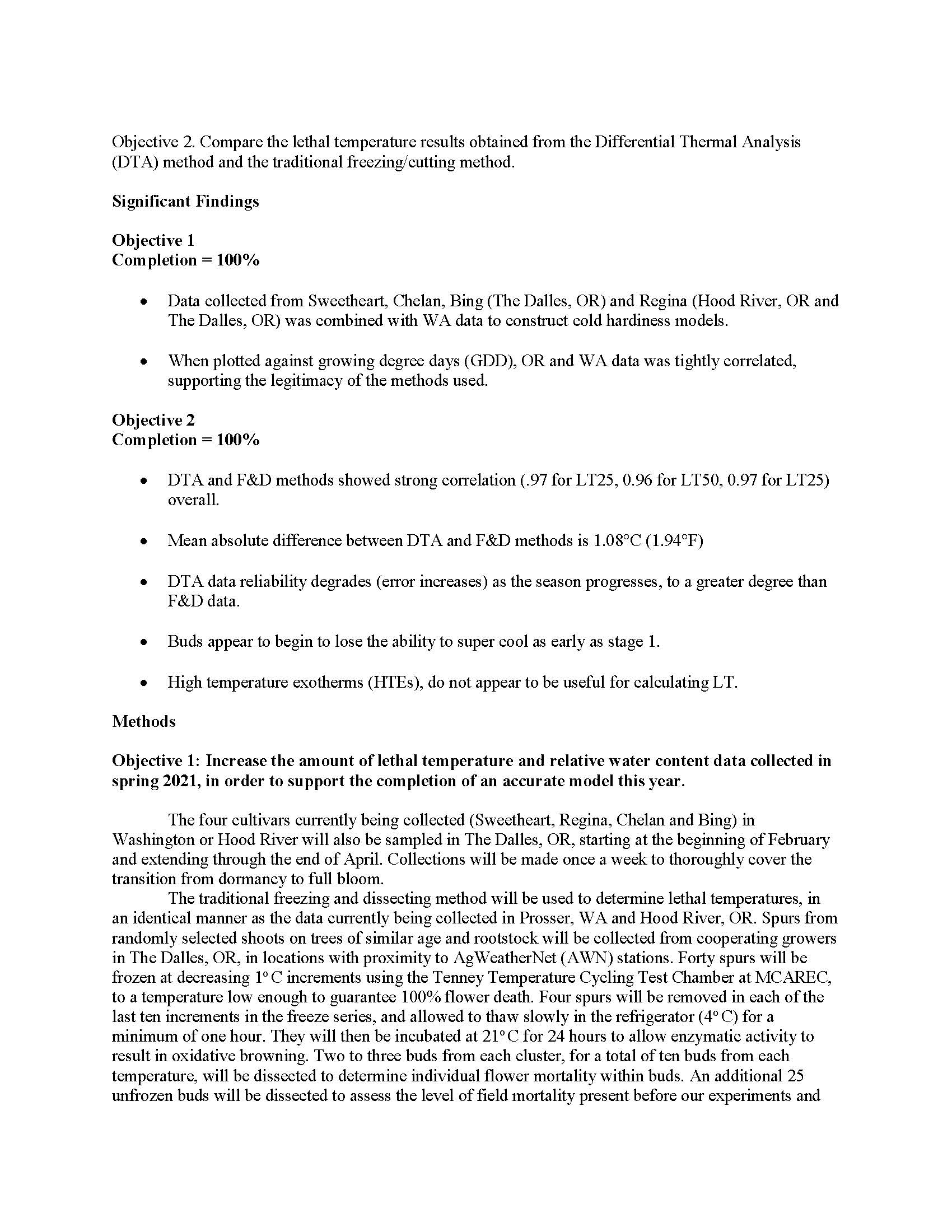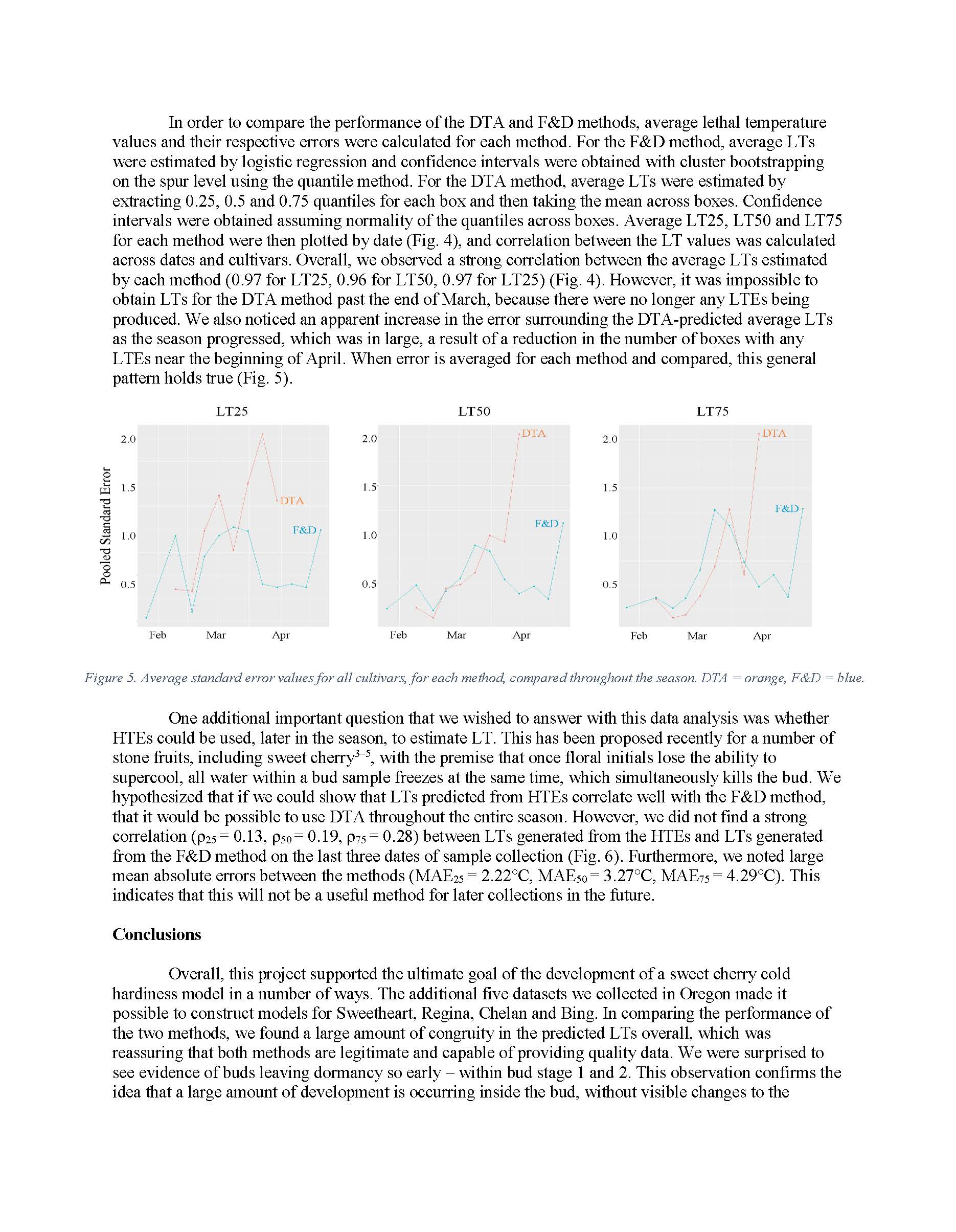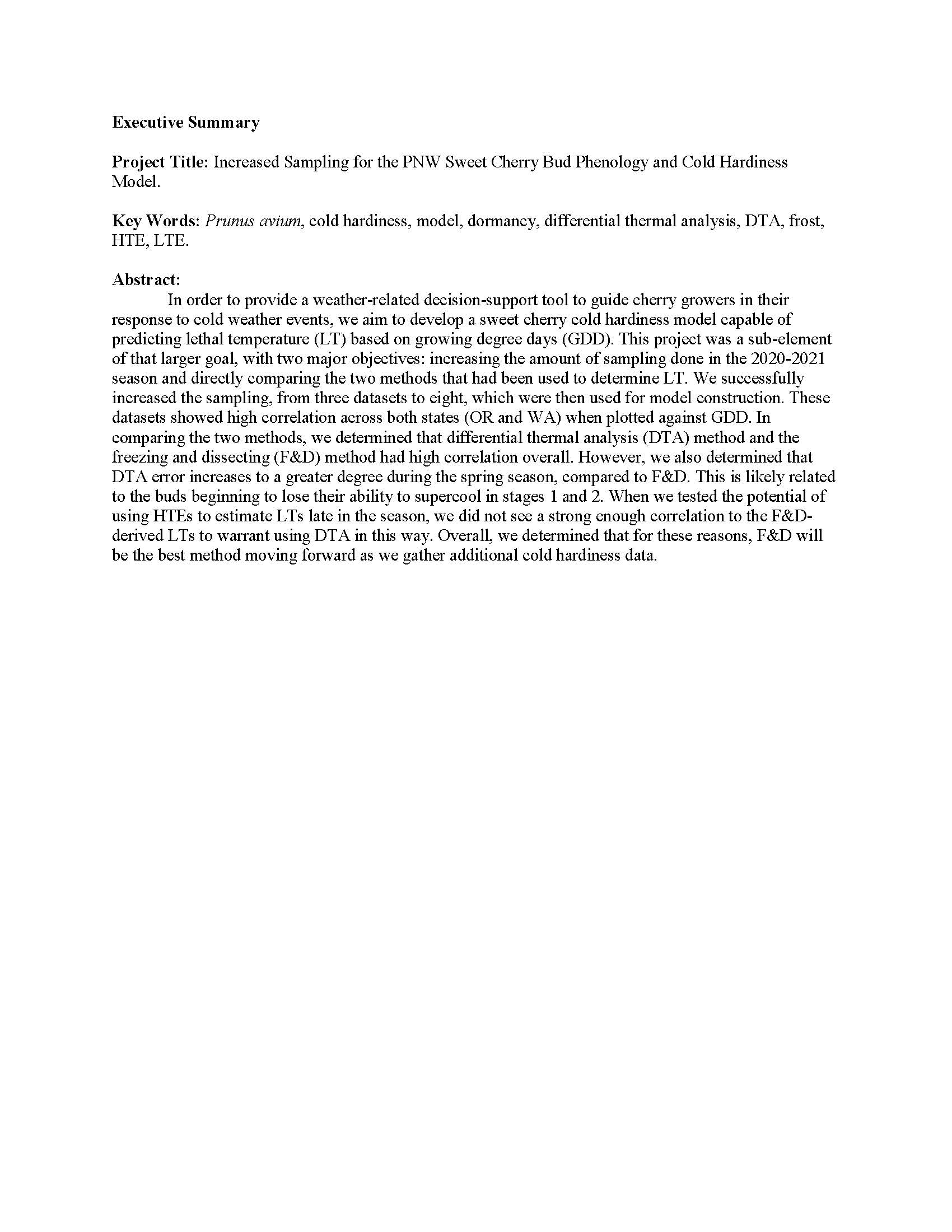Increased Sampling for the PNW Sweet Cherry Bud Phenology and Cold Hardiness Model
Author: Kelsey Galimba, Clark Kogan, David Brown
Published: 2022
Summary: In order to provide a weather-related decision-support tool to guide cherry growers in their response to cold weather events, we aim to develop a sweet cherry cold hardiness model capable of predicting lethal temperature (LT) based on growing degree days (GDD). This project was a sub-element of that larger goal, with two major objectives: increasing the amount of sampling done in the 2020-2021 season and directly comparing the two methods that had been used to determine LT. We successfully increased the sampling, from three datasets to eight, which were then used for model construction. These datasets showed high correlation across both states (OR and WA) when plotted against GDD. In comparing the two methods, we determined that differential thermal analysis (DTA) method and the freezing and dissecting (F&D) method had high correlation overall. However, we also determined that DTA error increases to a greater degree during the spring season, compared to F&D. This is likely related to the buds beginning to lose their ability to supercool in stages 1 and 2. When we tested the potential of using HTEs to estimate LTs late in the season, we did not see a strong enough correlation to the F&D-derived LTs to warrant using DTA in this way. Overall, we determined that for these reasons, F&D will be the best method moving forward as we gather additional cold hardiness data.
Keywords:









